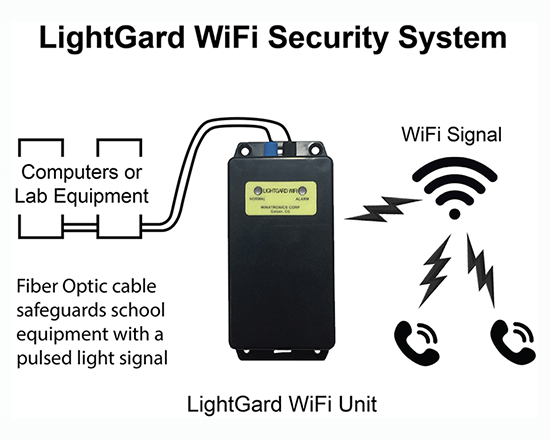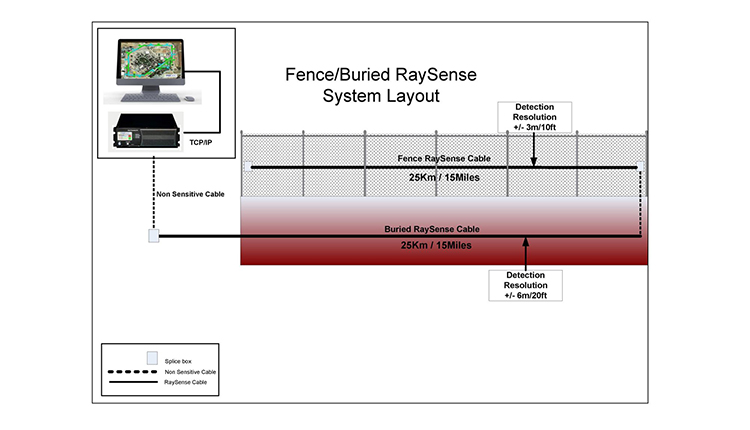The Advantages of a Fiber Optic Security System for Next-Generation Security Solutions
The Advantages of a Fiber Optic Security System for Next-Generation Security Solutions
Blog Article
Improve Your Safety And Security With Advanced Fiber Optic Protection Solutions
In a period where safety is extremely important, innovative fiber optic security systems present a compelling remedy for improving safety across different environments. What ramifications do these improvements hold for future safety measures?
Benefits of Fiber Optic Security
Harnessing the advantages of fiber optic modern technology substantially improves security systems throughout various applications. One of the main advantages is the boosted bandwidth capacity, permitting the transmission of big amounts of information at high rates. This is specifically critical for real-time video security, where high-resolution feeds can be sent without latency, ensuring immediate action abilities.
Additionally, optical fiber exhibit exceptional resistance to electromagnetic disturbance, which is crucial in settings with prospective signal disruptions. This reliability makes certain regular performance in critical security procedures. Fiber optic wires are much less prone to tapping and unapproved accessibility compared to typical copper wiring, thereby enhancing information stability and privacy.
Another significant benefit is the sturdiness of fiber optic systems; they are a lot more resistant to environmental variables such as dampness, temperature level changes, and harsh substances. This resilience converts to lower maintenance prices and longer lifespans for security setups.
Last but not least, the lightweight nature of fiber optic wires helps with much easier installment and transmitting, particularly in intricate facilities (fiber optic security system). Inevitably, the integration of fiber optic innovation into safety and security systems not only reinforces security measures yet also optimizes operational performance
Secret Functions to Take Into Consideration
When examining fiber optic safety and security systems, a number of crucial attributes need to be taken into consideration to make certain optimum performance and performance. Initially, analyze the system's detection variety and level of sensitivity; a considerable variety permits keeping track of large areas, while high sensitivity makes certain that also small disruptions are discovered without delay.
Following, think about the assimilation capabilities of the system. A fiber optic protection system need to effortlessly interface with existing safety and security measures such as electronic cameras and alarms, producing a cohesive protection network.
Toughness and ecological resistance are additionally vital features. Make certain that the system is designed to hold up against severe climate condition and potential physical dangers, as this will extend its operational life expectancy.

Lastly, explore the scalability of the system. A robust fiber optic protection system must be easily expandable to accommodate future demands without substantial overhauls. By carefully considering these features, you can select a fiber optic protection option that boosts security and protection in your environment.
Setup Process Summary
To effectively implement a fiber optic safety system, a systematic installment procedure is vital. This procedure begins with a detailed site evaluation to establish the particular protection needs and to identify ideal areas for fiber optic cords and security gadgets. Following this assessment, the setup group will develop a detailed strategy, including cable television paths, essential devices, and conformity with neighborhood policies.
Next, the installation includes laying the fiber optic wires, guaranteeing they are shielded from ecological factors and physical damage. Appropriate handling techniques are vital, as fiber optic wires are sensitive and can be easily click here for more damaged. After the cabling is installed, ports and terminations are diligently finished to ensure signal integrity.
The subsequent phase contains setting up safety and security devices such as electronic cameras, activity detectors, and security system, all incorporated with the fiber optic network. Extensive testing is carried out to confirm that all components are operating properly and to make sure optimal efficiency.

Contrasting Fiber Optic to Conventional Systems
The evolution of security modern technology has brought about substantial improvements in the comparison between fiber optic systems and conventional copper-based systems. Fiber optic systems utilize light to transmit information, using superior transmission capacity and rate compared to their copper equivalents. This causes improved data transmission capacities, making fiber optics excellent for high-resolution video surveillance and real-time tracking.
Furthermore, fiber optic cable televisions are immune to electromagnetic interference, minimizing the chance of signal destruction triggered by external factors. This particular makes sure regular efficiency, even in tough atmospheres. In contrast, conventional copper systems are more at risk to disturbance, leading to potential vulnerabilities in protection applications.
Toughness is another benefit of fiber optic systems. They are much less prone to harm from environmental variables such as dampness and temperature changes, which can endanger copper electrical wiring. Fiber optics are lighter and thinner, permitting for easier installment and minimized physical impact.
However, standard systems often tend to have reduced first costs, making them attractive for budget-conscious tasks. While fiber optic systems may call for a greater upfront financial investment, their lasting advantages-- such as reduced upkeep prices and higher integrity-- often outweigh the preliminary expense, positioning them as an exceptional option for modern-day safety demands.
Future Fads in Protection Technology
Arising patterns in safety modern navigate to this site technology are positioned to transform the landscape of surveillance and risk detection - fiber optic security system. As organizations significantly encounter innovative hazards, technologies such as expert system (AI) and artificial intelligence (ML) like this are coming to be essential to safety and security systems. These innovations enhance the ability of fiber optic systems by making it possible for real-time information analysis, determining anomalies, and automating actions to possible violations
Furthermore, the integration of the Web of Things (IoT) is revolutionizing security structures. IoT devices can offer comprehensive situational recognition and promote smooth communication in between different security parts. This interconnectedness permits extra reliable tracking and faster occurrence feedback times.
Biometric authentication is also obtaining energy, offering a greater level of security with unique physical qualities. As this modern technology progresses, it is likely to be integrated into fiber optic systems for boosted access control.
Conclusion
Finally, progressed fiber optic protection systems stand for a considerable advancement in safety and security and surveillance modern technology. Their remarkable transmission capacity, resistance to interference, and sturdiness promote reputable surveillance and information integrity. As these systems incorporate AI and IoT capacities, they boost the total security framework, making certain robust security for properties. The change from conventional systems to fiber optic services reflects a growing fad in the direction of much more efficient and reliable security steps in a progressively complex technical landscape.
Report this page